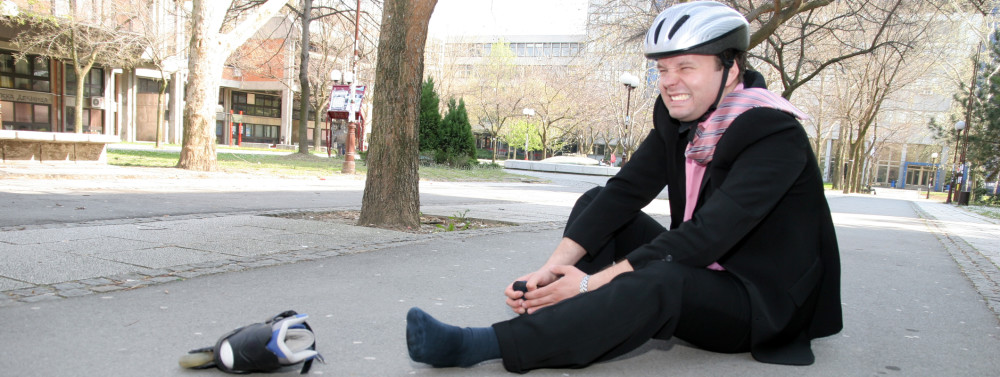Reflex sympathetic dystrophy can come on quickly or gradually. It usually affects one arm or leg but can affect the face or more than one extremity. More than one extremity involvement happens in approximately half of all cases. Each individual might not have all the features of the disease. In general, the stages of the disease determine the symptoms. For example:
- Acute stage: This is the first stage that lasts a few months long. Skin is burning, flushed, blanches to the touch, with swelling, pain and sweating or tenderness. There can be the beginnings of bone thinning on x-ray.
- Dystrophic stage: This stage can last 6-12 months long with the skin changes being shiny, with contractures, thickened skin and ongoing pain. The swelling and flushing are diminished.
- Atrophic stage: This stage can last indefinitely and has symptoms of loss of motion and function of the hand or food due to contractures (a flexed scarring process). The fatty layers are thinned and x-ray often shows marked osteoporosis.
The main symptom or RSD is a continuous, severe pain which is out of the ordinary when compared to the injury involved. Hands or feet are most commonly involved. This pain can be extraordinarily severe — the McGill Pain Index rates the pain from RSD/CRPS as greater than the pain associated with childbirth or the amputation of a finger, even after administration of powerful narcotic pain-relievers. Some sufferers have likened the pain to have their “bones crushed.”
Typical symptoms also include:
- A burning pain
- Increased sensitivity of the skin to touch
- Colder or warmer skin temperature
- Color changes, such as pale, purple or red
- Shiny, thin skin that is often sweaty
- Swollen and stiff joints
- Nail changes and changes in growth patterns of the hair
- Disability of movement with a decrease in ability to move the extremity.
The origin of the pain may be an injury to a toe or finger but the symptoms travel up the extremity, sometimes to the opposite extremity. Emotional stress can make the symptoms worse. In one research study of 829 patients, they found an early phase of regional inflammation, made worse after physical exercise. Pain was found in 93 percent of patients and a decrease in sensation was found in about 69 percent of patients. Tissue thinning can occur along with abnormal and involuntary movements, paralysis and muscle spasms. Forty-nine percent of patients will have a tremor and 54 percent of patients will have muscle incoordination. They felt that the bulk of the symptoms were due to an inflammatory reaction and was not a problem of the sympathetic nervous system.
In another study of just 9 patients with RSD, there were clinical findings suggestive of arthritic changes in the bon as found by x-ray. So not only do they have osteoporosis but their joints are affected as well. There was an estimated 1/3 reduction in bony material. The resorption of bone seems out of proportion to the level of immobility in the joint.
